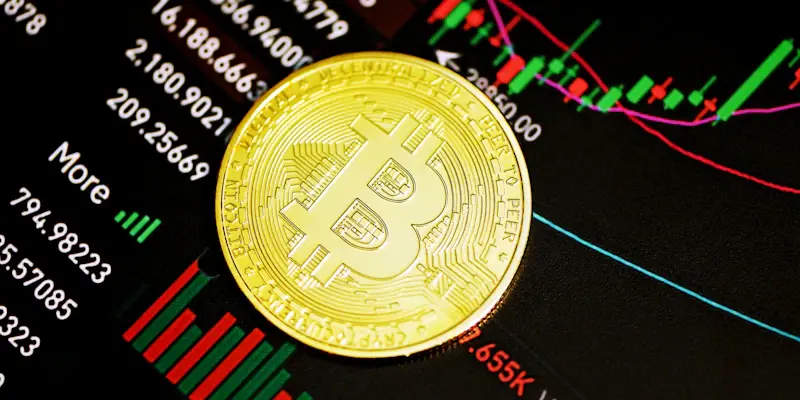In recent months, Bitcoin has experienced significant volatility and downturns in its market performance, drawing attention to global financial trends, particularly the Global M2 money supply. Currently trading at 25% below its all-time high of $109,350, Bitcoin’s performance is influenced by fear and uncertainty within the crypto market. Marked by a substantial drop in the fear and greed index to an extreme fear level of 10, the situation underscores the bearish sentiment prevailing in the market. Over the past 24 hours, the market witnessed nearly $1 billion in liquidations, with Bitcoin alone accounting for $491.68 million in total liquidations. This scenario points to a market dominated by long liquidations, reflecting high market speculation and quick sell-offs amid falling prices.
Raoul Pal, CEO of Real Vision, has emphasized the correlation between Bitcoin’s price and the Global M2 money supply, proposing a 10-week lag in Bitcoin’s response to changes in the M2 supply. Earlier in 2025, the M2 supply saw a decline from $108 trillion to $104 trillion, coinciding with Bitcoin’s price correction. Recently, a bounce in the M2 supply to about $107 trillion hints at potential stabilization and future recovery for Bitcoin prices. The overarching trend suggests a reliance on broader economic indicators and global market liquidity to predict Bitcoin’s performance.
Rising Fear and Market Uncertainty
One key theme in the recent downturn of Bitcoin is the rising fear and uncertainty within the crypto market. The fear and greed index, a crucial metric to gauge market sentiment, has dropped to an extreme fear level of 10, indicating a significant shift from optimism to pessimism among investors. Such extreme fear often discourages investment and promotes rapid selling, further deepening the bearish sentiment in the market. This shift has resulted in a substantial liquidation volume of approximately $1 billion over the past 24 hours, with Bitcoin contributing $491.68 million to this total.
The dominance of long liquidations over short ones highlights the high level of market speculation. Investors, betting on long positions in anticipation of a price increase, quickly sell off their holdings when prices begin to fall, exacerbating the downward spiral. This trend not only reflects the volatile nature of the crypto market but also underscores the lack of confidence among investors amidst fluctuating prices. Such high speculation and rapid sell-offs tend to create a cycle of fear, contributing to further price drops and reinforcing the bearish market sentiment.
Correlation with Global M2 Money Supply
Raoul Pal’s analysis draws a critical link between Bitcoin’s price behavior and the Global M2 money supply. According to Pal, there is a 10-week lag in Bitcoin’s price response to changes in the M2 supply, which provides valuable insights into the cryptocurrency’s future price movements. Earlier in 2025, the M2 supply experienced a reduction from $108 trillion to $104 trillion, aligning with a notable correction in Bitcoin’s price. This correlation underscores the broader economic influences on Bitcoin’s market performance.
In recent developments, a resurgence in the M2 supply to approximately $107 trillion indicates a potential for Bitcoin’s price stabilization and future recovery. Such a pattern suggests that increases in global liquidity, as reflected by the M2 supply, could positively affect Bitcoin prices. The recognition of this lag and its impact on Bitcoin offers investors a predictive tool to understand and navigate the cryptocurrency market amidst fluctuating economic conditions. The rise in M2 supply provides a promising outlook for Bitcoin, assuming historical trends hold and broader economic indicators stabilize.
Predicting Bitcoin’s Future with Financial Indicators
The reliance on broader economic indicators and liquidity within the global market to predict Bitcoin’s performance has become increasingly evident. Raoul Pal’s insights into the 10-week lag in Bitcoin’s response to changes in the M2 money supply highlight the intricate dynamics between global financial trends and the cryptocurrency’s market behavior. The recent increase in the M2 supply hints at a potential recovery for Bitcoin, offering a beacon of hope amidst prevailing market fear.
However, the significant shift in market sentiment towards extreme fear suggests that the road to recovery may be fraught with challenges. The potential for further declines remains high, with investors cautious and hesitant given recent market volatility. Nonetheless, understanding these financial affiliations is crucial for making educated decisions in the volatile crypto market. As global liquidity improves, indicated by the rising M2, there lies a possibility for a bullish trend to emerge, providing a glimmer of hope for investors.
Navigating Market Volatility with Informed Decisions
In recent months, Bitcoin has faced significant volatility and downturns, highlighting global financial trends, particularly the Global M2 money supply. Currently, Bitcoin is trading at 25% below its all-time high of $109,350, driven by fear and uncertainty in the crypto market. The extreme fear level of 10 in the fear and greed index reflects this sentiment. Over the past 24 hours, the market saw nearly $1 billion in liquidations, with Bitcoin alone accounting for $491.68 million, indicating a trend dominated by long liquidations and quick sell-offs amid falling prices.
Raoul Pal, CEO of Real Vision, has highlighted the correlation between Bitcoin’s price and the Global M2 money supply, suggesting a 10-week lag in Bitcoin’s response to changes in the M2 supply. Earlier in 2025, the M2 supply declined from $108 trillion to $104 trillion, aligning with Bitcoin’s price correction. Recently, an increase in the M2 supply to around $107 trillion suggests potential stabilization and future recovery for Bitcoin prices. This overall trend underscores the importance of broader economic indicators and global market liquidity in predicting Bitcoin’s performance.

